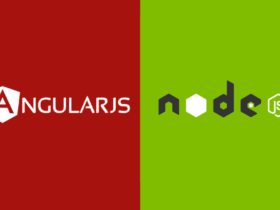SEO helps companies develop long-term brand equity by increasing their visibility on search engines. Search engine optimization (SEO) is an effective way to boost a brand’s visibility since it increases the quality and quantity of visitors to a website. Google accounts for 94% of mobile and target searches and 78% of desktop searches. Many free tools are available to businesses who register with Google to help them rise to search engine results (SERPs) ranks. Google Search Console is one of these free tools.
Anyone with a website may benefit from using Google Search Console to understand better how they are doing on Google Search and what they can do to improve their ranking and drive targeted traffic to their websites. It’s time to learn more about Google’s Search Console and how to use it to its fullest potential.
What Exactly Is Google Search Console?
The free platform Google Search Console, formerly Google Webmaster Tools, is accessible to anybody with a website. SEOs, company owners, marketers, and app developers are just a handful of the many professions that rely on this handy tool, in addition to web admins.
To improve their organic online presence and track changes in search engine algorithms, website owners should utilize Google Search Console.
Google Search Console tools and features:
The following tasks may be accomplished using Google Search Console’s tools and features:
Health Check for Websites – GSC gives users a summary of their rates and data and any problems that Google may discover.
Crawling – The search Console can check the location and crawl of a website.
Search, Discover, and News — Google provides feedback on the Performance of website pages in each of these services.
Indexing – Users may resolve indexing difficulties and request new or updated material.
URL Inspection – GSC reveals code problems, usability concerns, canonical tags, and other issues.
Organic Traffic – If you’re interested in how often your website shows in Google’s search results and how many people click through to your site when searching for a specific term, you may utilize Search Console.
Backlinks – Using Google’s Search Console, users may see a list of websites that have been referred to their site.
Mobile Usability — Users may check how mobile-friendly each website page is.
Sitemaps – Search Console provides information regarding uploaded sitemaps and bot indexing concerns.
Core Web Vitals – Based on data collected from actual users, Core Web Vitals gives users insight into how their sites are doing.
Status of Results – Google examines the rich results that Google has crawled and any faults that have been detected.
Other Tools – Aside from the main Search Console tasks, several additional essential tools and features are available, such as those dealing with security, links and redirects, migrations, and manual actions.
Anyone may utilize Google Search Console, regardless of their degree of expertise or specialized knowledge. However, it will not improve a business’s SEO or organic traffic by merely setting up Search Console in the first place. Therefore, it is essential to know how to utilize Google Search Console to get the most out of it.
Google Search Console Tips from the Experts:
A website’s overall health may be improved by using the flexible tool known as Google Search Console to increase organic traffic. Google Search Console has a wealth of features and functionalities that may use to their full potential.
Use Google’s URL Inspection Tool to see a website:
Google Search Console’s URL Inspection function is handy. This cutting-edge tool gives users details about the Google indexed version of a particular website, including structured data mistakes, AMP faults, and indexing problems.
Users may use the URL Inspection tool to alert Google to crawl a redesigned website or fresh blog post. Users may examine a live URL, request indexing for a URL, see a rendered version of a page, view loaded resources, and troubleshoot a missing page. They can also check the most recent state of a URL.URL Inspection reports indexing problems. For more information on the URL Inspection Tool, go to the Search Console Help Center and click “Report an Indexing Issue.”
Type the URL in GSC’s top search box and press “Enter” This generates a URL Inspection report that includes when Google last scanned your page.
In addition to upgrading outdated websites, offering a new mobile design, launching a new portion of a website, adding rel=canonical tags, changing robots.txt files, and switching from HTTP to HTTPS, this tool may also be helpful.
Look For Possible Technical Mistakes In The Upgrades Section:
A website may have technological issues, but it should fix them fast. Businesses that ignore these blunders risk losing clients and stunting their development. PPC advises utilizing the Google Search Console’s Enhancements section to find potential technical issues. Will show any issues with speed, AMP, mobile usability, breadcrumbs, products, logos, and the Sitelinks Search Box in the GSC’s Enhancements area.
Suppose problems are found while monitoring Search Console; correct these technical SEO concerns. The purpose is to avoid error codes, which cost effort and maintenance. In addition, SEO errors hurt a website’s search engine rating.
Review search results for website content ideas:
Building a connection with your audience and providing value to your readers are two of the many benefits that quality content can provide for your company. In addition to increasing conversions and generating leads, content marketing may help develop a brand’s trust.
Take a look at Google’s search results to determine what kinds of material work best. For example, you may get a decent idea of what material your target audience is interested in by looking at Google Search Console’s “Search Results” page under Performance.
This report may be pretty helpful when reusing old material on a website. Look at the most popular sites and see if you can turn them into films, podcasts, infographics, or slideshows. It is essential to publish the proper material on each platform to get the most out of it. Twitter users like infographics.
Search Console and Google Analytics may improve keyword use:
It is essential to use keywords to inform Google about the content of a specific site. A word or phrase online users enter into search engines to obtain the information they are searching for is called a “keyword”. It is common practice for web designers and marketers to use clever keyword phrases to raise their rankings on search engine results pages (SERPs).
Now that Google Analytics has been updated, it is no longer possible to get keyword data from a Google Analytics account’s stats and analytics section. On the other hand, Google encrypted that data in 2013 when it switched to HTTPS. Even though Google Analytics still allows users to monitor search queries, they will frequently see ‘not specified’ keywords, which are the terms visitors use to locate the site. Therefore, Google Search Console and Google Analytics should be connected. To get a complete picture of the website’s keyword rankings, clicks, average position, and impressions, go no farther than GSC reports. Search Console’s Performance tab has this data.
Analyze URLs to fix broken websites:
Spending a lot of time developing content, tweaking headlines, organizing data, and adding headers may be irritating. Website owners may struggle to identify the issue. Google Search Console shows why a website isn’t doing correctly. It is better to use GSC to evaluate specific URLs for Google problems.
The URL inspection dashboard has a search box at the top of the page where you can type in the website URL you want to check. Afterwards, Google will provide a report about the page’s Performance. For example, it might be a problem if a website isn’t mobile-friendly.
Add internal links to top-performing pages:
Google Search Console is an excellent tool for leveraging high-performing sites. First, find the most popular pages is recommended to maximize your website’s traffic. These pages route visitors to other site material. Then, add internal links from other pages on the website that are related to high-interest content. Users are invited to click on a link that will take them to a different page on the website while reading a top-performing page. You should include only internal links if they are helpful to the reader and offer value to the original page.
When using Google Search Console, ensure all reporting options are checked, including the ones for total impressions, clicks, average position, and average click-through rate (CTR).
Check the Countries tab to see where the website ranks:
Google Search Console is a beautiful way to discover which search queries you rank for. However, it’s also vital to check what countries a website ranks in since this might affect SEO strategy. Use Search Console’s nations tab. Monitoring search engine result page helps website owners change their SEO efforts and target nations with the highest ROI.
Location is a significant element in internet search results. Google may detect a website’s location in several methods, including using the nation domain, country code, IP address, location information from the website, or data from the business’s Google My Business (GMB) page.
Use Search Console to inform Google which countries to target. Language and Country tabs help set geographical choices.
Optimize high-CTR keywords:
A page must be relevant and valuable to those looking for that specific term or phrase to have a high CTR. When it comes to online advertising, CTR (click-through rate) is a statistic that measures how many times a user sees an ad.
Google Search Console is best to analyze which keywords get the most clicks and optimize a website around them.
Find relevant keywords presently ranking in positions 8 through 20 by going to the Performance section of the Search Console and filtering the queries by page. It will show you what keywords it currently ranks for. These keywords will increase your website’s ranks.
See what devices are driving website traffic:
Technological advances enable users to use cellphones, tablets, and PCs to search the web. Knowing what devices a target audience uses to see a website may help with SEO. Google Search Console compares mobile and desktop traffic. The “Devices” part of the performance report lists several devices and shows which generates the most traffic to the site.
Reports from Search Console may assist website owners in assessing whether their SEO is working.
Compare website performance to determine SEO effectiveness:
Methods are effective by tracking website performance over time. It is advised to keep an eye on a website’s specific position in the SERPs at least once a month to assess if a company’s SEO efforts are successful.
SEO efforts are practical if the average position rises; otherwise, one must re-evaluate SEO techniques if the average position decreases. It is recommended that landing pages be monitored at least once a week to have an idea of where your campaign is doing on average.
Keep comparing statistics to see how the website is doing and where it can improve. Google Search Console’s Results feature enables comparing quarterly or annual Performance.
Conclusion:
Google Search Console is a free, user-friendly tool that helps companies improve their digital marketing. In addition, Techzera can provide further information and SEO marketing consultations.





